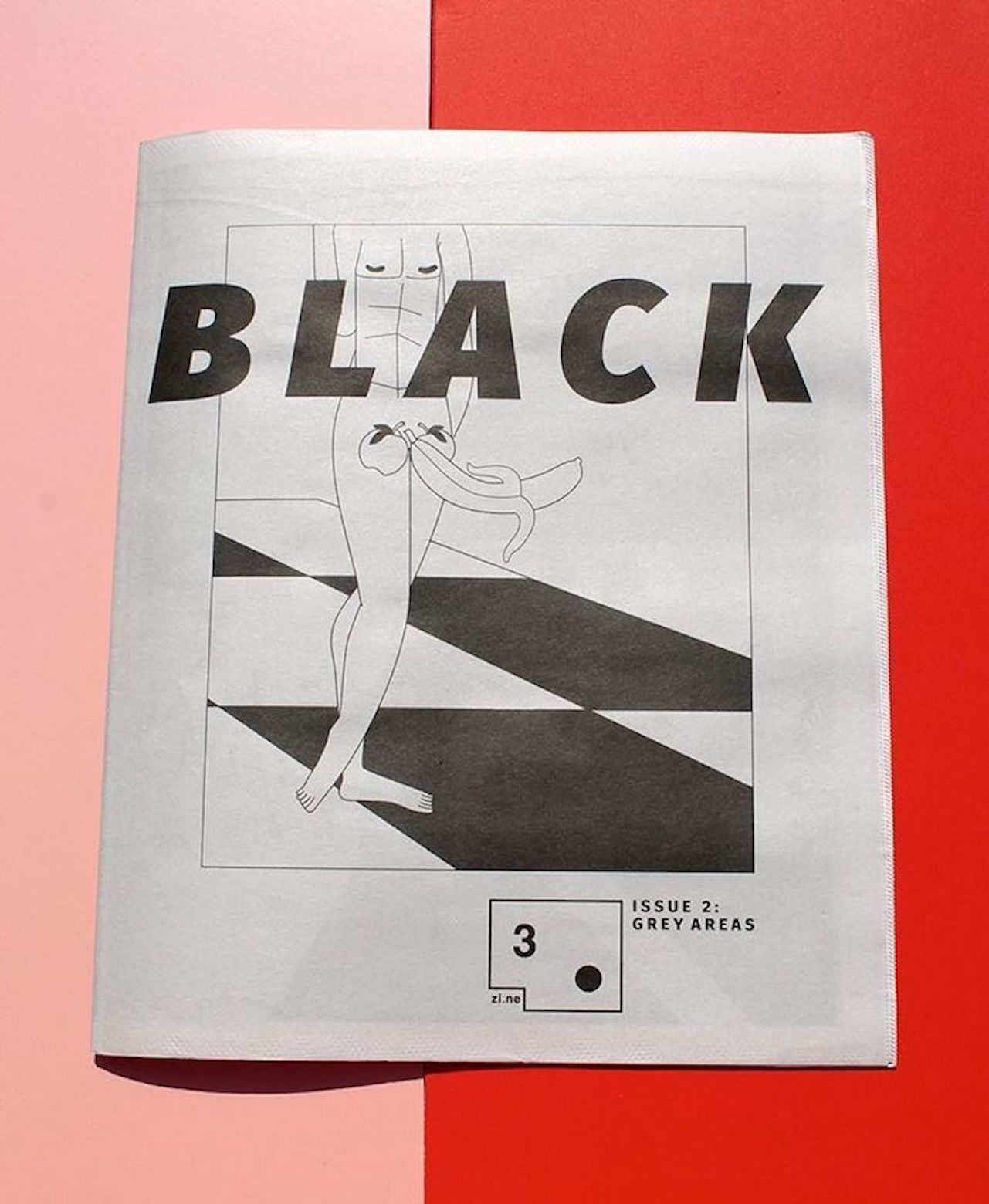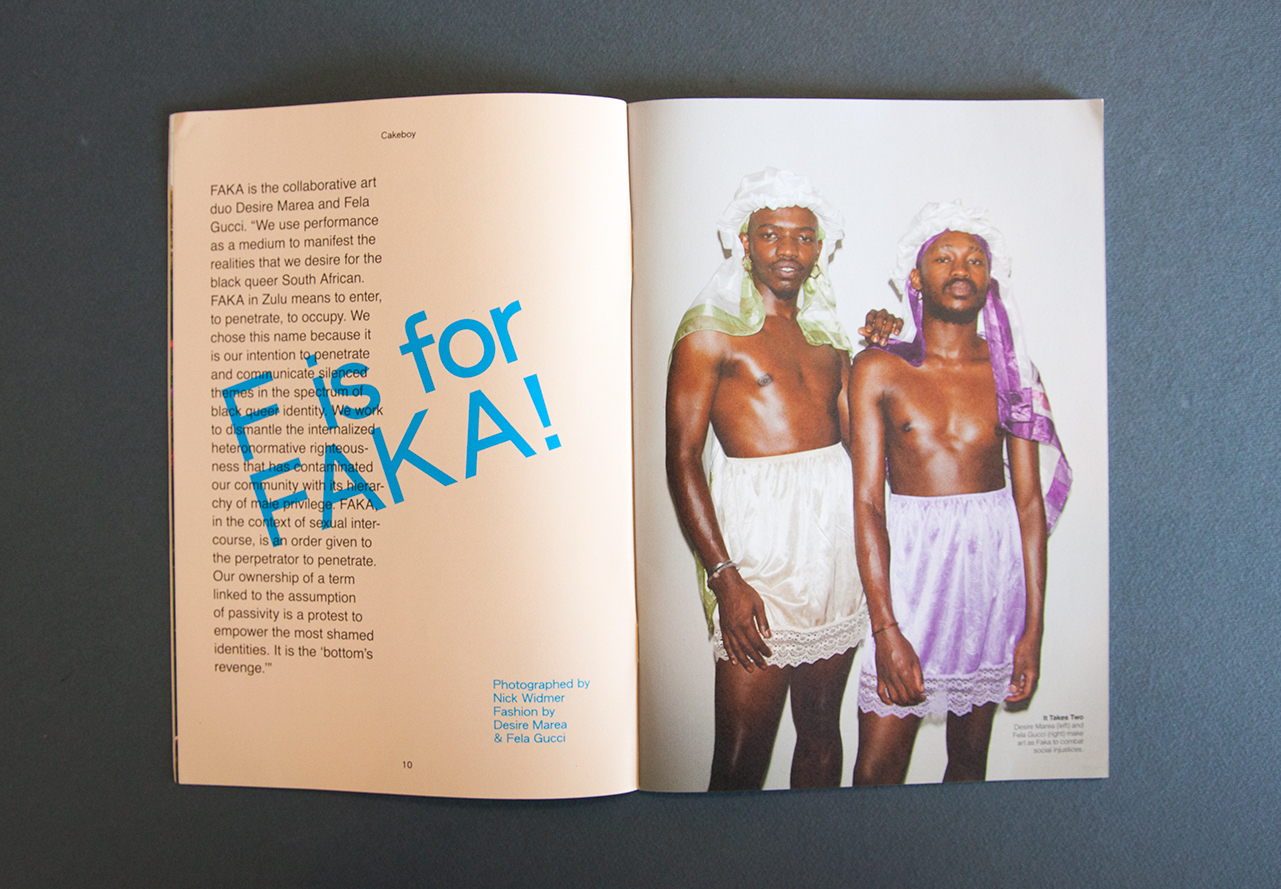On October 22 and 23, the annual New York Queer Zine Fair will take over the Bureau of General Services-Queer Division in Lower Manhattan, the historic LGBT center that hosts Keith Haring’s iconically NSFW 1989 bathroom mural Once Upon A Time. During the two days, over 25 different queer-aesthetic publications will be sold and spotlighted. They concern themselves with the full spectrum of the queer experience: the lifelong anxiety homophobia can breed, the complexities of possessing intersectional identities, and… just really, really liking butts. We talked to five zine makers showcasing their work at the fair this weekend about what motivates them and just what it is about zines that allows queer voices to shine through unfiltered.
Cakeboy
Creator Sean Santiago turned to Clueless for Cakeboy‘s name. More specifically, the scene in which Murray informs Cher her crush is gay through a string of cringe-worthy euphemisms and stereotypes. But Cakeboy, founded in 2015, strives to demolish that kind of thinking. If anything, with its pro-femme aesthetics and touching profiles on boundary-breakers like trans male artist Sawyer DeVuyst, Cakeboy can be read as an effort to give depth to its one-dimensional title. “We’re a space for the thoughts behind a person,” Santiago says on his website. “Not so much dicks. There’s so much space for dicks on the internet. Maybe this goes back to the cake thing. Because I think I’d be okay with more ass. Can that be a metaphor for vulnerability? Or am I just a pervert?”
cakeboymag.com

Belladonna Press
As a feminist avant-garde collective, Belladonna Press has committed itself, since 1999, to giving a voice to those who are silenced. They publish the work of marginalized writers in series of small-batch chaplets that sell out frequently and quickly. But what is it about these one-off works that resonate so much with marginalized groups? “There is something special about the format of zines,” Ana Paula, a member of Belladonna, says. “It’s ephemeral, and that’s consistent with the identity of these people — which is ever-changing and unstable. Both don’t conform to what is generally perceived to be the rules.”
belladonnaseries.org

Anxiety Dreams Inc.
Artist Justin Corriveau repurposes the self-help books, medical guides, and religious magazines he discovers in Salvation Armys to create zines like Doctor, Doctor — depicting the hypochondriac queer through sterile medical illustrations and the casually invasive questions your doctor may ask, like, “Is your sexual activity largely casual and unplanned?” For a community that has had its sexual activity and health so closely linked since the AIDS epidemic, the paranoia strikes a chord. “It’s something I kind of make fun of in a way,” Corriveau explains. “The anxiety I experience and blowing it out of proportion. I knew I was gay from a pretty young age so it made me conscious about everything I did: the way I walked, the way I talked. I think for most queer people anxiety is a part of their experience.”
anxiety-dreams.com

Pegacorn Press
For over 15 years, Caroline Paquita has handmade zines with the goal of spreading an “artistic gaylord agenda.” It’s her motivation for pouring all of herself into a craft that is rarely financially rewarding. “I view [my zines] as extensions of myself. For a long time there wasn’t a space in some of the zine fairs and fests for queer voices,” Paquita says. “So it just made sense for me, who identifies as queer, to have a focus on that.” Her zines are filled with illustrations of fantastical femme creatures, think: Where the Wild Things Are meets Aztec goddesses. Her most recent zine, Bar Dykes, is a reprint of an obscure 1980s play that depicts 1950s dyke bar culture. Also included: an interview Paquita conducted with the playwright Merille Mushroom, a lesbian who married a gay man to avoid persecution and discrimination.
carolinepaquita.blogspot.com

3 Dot Zine
Started in 2014, 3 Dot Zine is a collection of art, photography, and writings centered on blackness. Devin N Morris, the founder and creator, employs a distinctive collage style with his photography, the final images feeling as if they was cut and pasted together. The photos possess a fashion sensibility, appropriating an aesthetic that so commonly leaves out brown bodies, to create engrossing visual representations. Morris cites his hometown of Baltimore as one of 3 Dot‘s chief inspirations, the culture and pride of the inner city’s large black population bleeding through the pages. “I grew up privileged in a way, growing as a person who saw a little of himself everywhere he went,” Morris says. ” I had a good sense of how many possibilities were available to me as a brown person because I had so many examples of what I could be. I see the zine as a space that uses representation of black, POC, and queer bodies as a means of affirming the lives of individuals who might view it. The message being you are here and you are limitless, never other.”
3dotzine.com
Credits
Text André-Naquian Wheeler
Images courtesy the artists
